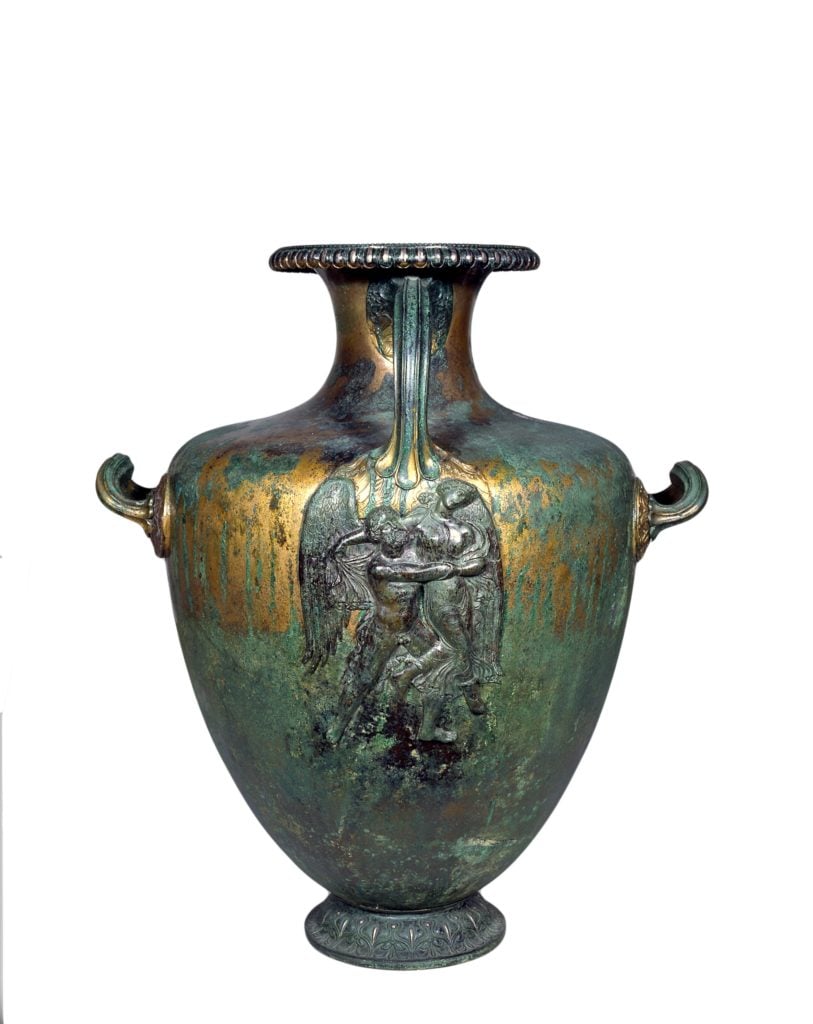Opinion
A Bronze Vase From Ancient Greece: Still Shiny, After All These Years
THE DAILY PIC: At the Onassis Cultural Center, a bronze vessel reveals the ancients' taste for glitz.

THE DAILY PIC: At the Onassis Cultural Center, a bronze vessel reveals the ancients' taste for glitz.

Blake Gopnik

THE DAILY PIC (#1804): This bronze vessel was made in Pharsalos, Thessaly—now Farsala in Greece—in about 370 BCE. It’s now in the show called “A World of Emotions: Ancient Greece, 700 BC – 200 AD” at the Onassis Cultural Center in New York. It speaks to a bunch of issues that have always interested me.
For one thing, this vessel is much less corroded than most ancient bronzes, leaving big areas that still have their original brassy sheen. That, rather than the oxidized green or black that we are used to—and used to admiring—was probably the intended look of almost all bronzes right up until about 1500. If you could make something with almost the same look as gold, why wouldn’t you?
Speaking of gold … it’s worth remembering that objects made of gold or silver—or failing that, bronze—were the truly precious works of art in the ancient world. It’s just our bad luck that almost all have been melted down over the years. Instead, we’ve been left to ooh and aah over all the painted ceramics that just happen to have survived. While those were far from despised objects in their time, or so I’m told, they were several rungs down the cultural ladder from cast-metal ones.
What strikes me most, however, is that the naturalism of the relief on a bronze bowl like this one is perfectly of a piece with all the great, naturalistic statues and reliefs of monumental ancient art. Whereas hardly any of that naturalism spills over into the much more stylized scenes painted onto ceramics. I’m not sure how to conceive of one visual culture giving birth to two such different modes of depiction. (Athens, National Archaeological Museum, Χ 18775, courtesy Onassis Cultural Center)
For a full survey of past Daily Pics visit blakegopnik.com/archive.